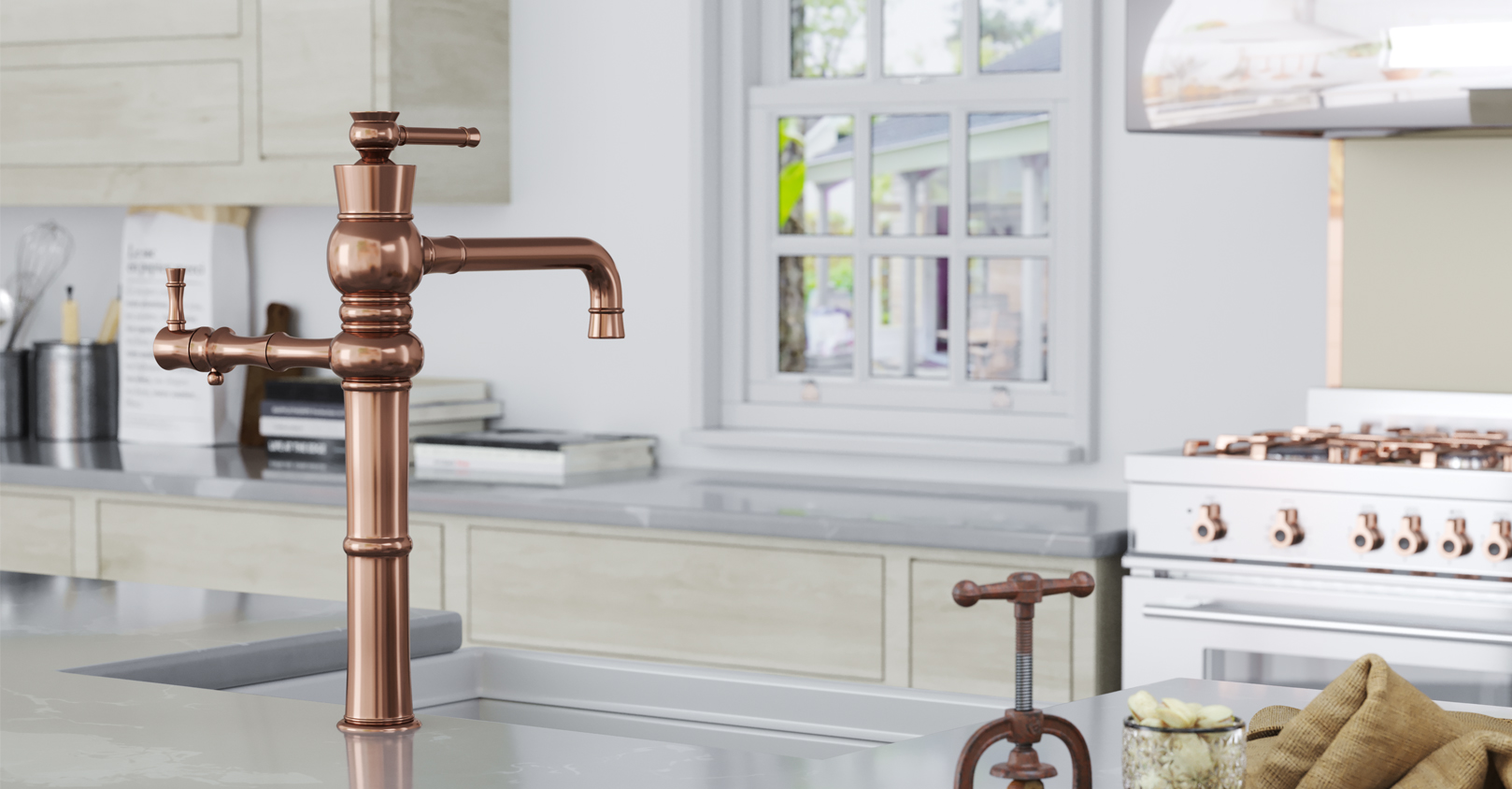When the term PVD coating is mentioned, many people immediately think of the beauty and wide range of colors it brings to faucets. Although this is completely true, the beauty of the faucets we use in kitchens or bathrooms is only part of the story. The main advantage of PVD coating compared to conventional plating lies in its durability, resistance to corrosion, scratches, and its ability to maintain the faucet’s shine over time. This becomes even more important in today’s modern interiors, where visual appeal is just as significant as quality and long lifespan.
One common mistake among faucet users is assuming that plating and PVD coating mean the same thing. However, PVD is a modern technology that, at Rassan, is applied as a final layer over nickel plating.
In this article, we will examine what PVD coating is, why it matters, what benefits it provides for faucets, and why brands such as Rassan use this advanced technology in their production.
What exactly is PVD coating?
PVD stands for Physical Vapor Deposition, which means the physical deposition of vapor. This technology is used in advanced industries such as aerospace, medical equipment, luxury watchmaking, and of course, faucet manufacturing. But why has it attracted so much attention?
In the PVD coating process, metals such as titanium or zirconium are vaporized in a vacuum and controlled environment. The vapor then bonds to the surface of the component with high energy, creating a very thin yet hard and durable layer. This layer is not only decorative—it alters the physical structure of the faucet’s surface, resulting in a remarkable improvement in its properties.
Why is PVD superior to electroplating?
Before the spread of PVD technology, electroplating was the most common method for coloring and protecting faucets. However, this method had several drawbacks: over time, faucets would become worn, corroded, or dull.
In contrast, PVD coating has several distinctive advantages:
- High durability and resistance: The thin layer is extremely resistant to scratches, impacts, and corrosion.
- Environmentally friendly: Unlike conventional plating, the PVD process produces no toxic wastewater.
- Greater color variety: It allows the creation of modern and unique colors such as matte gold, rose gold, charcoal black, brushed nickel, and more.
- Long-lasting shine: Even after years of use, the surface of PVD-coated faucets remains bright and like new.
That is why many reputable global brands in recent years have turned toward using this advanced technology.
Stages of the PVD coating process
Although the PVD coating process may seem complicated, it essentially includes several key steps:
Surface preparation: The faucet surface is carefully cleaned and degreased.
Creating vacuum: After placing the components inside the PVD chamber, a vacuum is created.
Metal vaporization: The desired metal or compound is vaporized under controlled conditions.
Deposition: The metallic particles are accelerated toward the surface and form the final coating layer.
Cooling and quality testing: Once finished, the products are inspected to confirm surface quality and uniformity.
This high level of precision and control makes the PVD coating process far more durable and reliable than many other coating methods such as electroplating.
The impact of PVD coating on interior design and decoration
Faucets play an important role in the beauty of kitchen and bathroom spaces. Today, besides functionality, their design and color also matter greatly. PVD technology has made it possible for interior designers to use a wide range of modern, durable colors—colors that were once either impossible or lacked sufficient durability.
For example, black is one of the most popular choices in modern design. Before PVD coating, this color would easily lose its appearance due to scratches or weak resistance. But with PVD coating, this issue has been solved, and black faucets can now be used confidently in kitchens or bathrooms without worrying about color fading or surface damage.
Lasting beauty: an advantage beyond appearance
As mentioned at the beginning, one of the most important features of PVD coating is that it not only creates a beautiful appearance but also ensures that this beauty lasts.
Faucets coated with PVD are resistant not only to moisture and cleaning agents but also to abrasion and impact.
This durability allows PVD-coated products to remain as good as new for many years—a quality highly valued by both consumers and interior designers.
PVD and environmental responsibility
Today, protecting the environment has become a crucial responsibility for industries worldwide.
In this regard, PVD coating is also an ideal choice. Unlike traditional plating methods, it does not use hazardous chemicals, and its process has minimal environmental impact.
Why does Rassan use PVD coating technology?
At Rassan, we have always strived to move beyond conventional standards.
We believe that true beauty is meaningful only when combined with durability, quality, and respect for the environment.
That’s why Rassan applies PVD coating to many of its products. This choice allows us to:
• Produce faucets with a modern, luxurious, and distinctive look.
• Offer greater resistance against scratches, corrosion, and fingerprints.
• Maintain eco-friendly production practices.
• Ensure long-term customer satisfaction.
Conclusion: Technology in the service of better living
PVD coating is not just a technology for changing color; it is a bridge between modern design, long-lasting durability, and environmental responsibility.
It is a technology that keeps your faucets beautiful, clean, and durable for years, while causing minimal harm to the environment.


